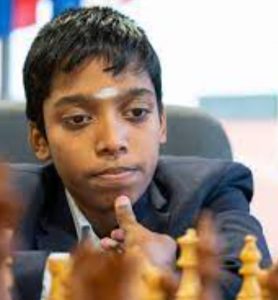While we discuss the need for Neuro Rights Protection, and recognize the need when there is a direct intervention of an external computer system to the human nervous systems, the current laws of privacy do throw open certain concerns where the human behaviour is unfairly (or without proper transparency) manipulated by the use of technology by E Commerce entities.
The marketing activities which are guided by the AIDAS principle (Awareness, Interest Desire, Availability and Satisfaction) start with “Market Segmentation” which is segregation of potential customers based on their profiling in terms of identifying an effective communication channel for the marketing messages. The actual marketing messages conveyed either through mass advertising or targeted communication or PR are designed to exploit the knowledge of the profiling of the audience and sending them appropriate messages.
We may go to any length to criticise the Cambridge Analytica issue but in the end the problem is political that Cambridge Analytica helped Donald Trump to win. The criticisms are not sustainable on the principles of marketing that has been practiced for decades and involve, profiling of audience through market research, segmenting them based on filtering of the profiling and designing the right communication for each segment to achieve the desired communication goal.
Now researchers have also been working on what they call “Dark Patterns” where the activities of multiple digital platforms are aggregated to arrive at the required profiling and communication effectiveness.
Privacy Activists may live in deniability, may criticise the unfairness of say India Today, NDTV, or ESPN Crickinfo which manipulated the image of the Chess prodigy Pragyaananda to remove the vibhuti on his forehead so that he does not look a Hindu.


(P.S: It is said that Mr Pragyaananda always presents himself with the Vibhuti mark as is evidenced by his many other photos and hence the one published by some media vehicles is suspected to have been manipulated).
But it is a fact that Internet uses profiling, modification of facts to a great extent to achieve their marketing goals.
What we are also observing now are the “Dark Patterns” which are design interfaces or features that subtly manipulate people in making sub optimal decisions. In fact the marketing managers are paid only to increase the marketing effectiveness under the given genuine product benefits.
I refer to a research article published recently on Cambridge.org which discusses the phenomenon of “Dark Patterns” where multiple internet communication points collaborate to make the user change his purchasing desire.
Limited-quantity scarcity messages and others like these (e.g., countdown timer, confirmshaming, hidden subscriptions, etc.) are common ‘dark patterns’ found on online retail stores, generally with the goal to induce impulse buying.
Coined by Brignull (Reference Brignull2010), dark patterns are subtle design features embedded in websites that prey on human psychology to steer consumers into making decisions that, if fully informed or under optimal conditions, they might not make.
From a behavioral science perspective, dark patterns are designed to prompt consumers to evoke System 1 thinking rather than a more deliberate and thoughtful System 2 thinking by exploiting cognitive biases like scarcity bias or social proof (Stanovich & West, Reference Stanovich and West2000; Kahneman, Reference Kahneman2011). Central to the motivation as to why online vendors incorporate dark patterns is the attendant impact on impulse buying.
There is a similarity between these techniques and many devices used in Meta Verse. Take for example a simple device like a coloured glass we wear to cheat our eyes of the perception of colours. This is an external device that manipulates the human system and is actually a neuro technology of one kind which is already present within us.
Do our current laws handle such devices and their impact?… is a question we need to ask ourselves.
Coming to the world closer to neuro science, let us look at “Anaesthesia” which is a system that numbs the nerves either at a local part of the body or in General. Is it a “Neuro Intervention Technique”? and is it covered under the current laws?…. is another question we need to ask ourselves.
These questions indicate that the developments of Neuro rights is a seamless extension of the current privacy concerns though we speak as if it is different.
Probably Neuro Rights has many more nuances to be dealt with and it would be better to consider it as a separate law but it cannot be denied that the principles of neuro rights are already embedded in the current privacy laws.
We have a similar situation today where Information Technology Act 2000/8 already has provisions which in principle address the Privacy concerns but we still argue that without a separate law on privacy, there is no legal protection. It was strange that the honourable Supreme Court which gave its judgement in the K S Puttaswamy case did not even make a reference that there are laws such as Information Technology Act 2000/8 which perhaps is inadequate and need to be fortified with a new law. Even the Justice Srikrishna Committee did not give a suitable recognition that there already exists a law on privacy in India which may be inadequate and need re-inforcement.
Similarly, most of the professionals would fail to recognize that DPA 2021 has many provisions which can be conveniently extended to protection of Neuro rights though some conceptional clarity may be provided by a separate law taking cognizance of the interplay of neuro science, philosophy with technology and law while discussing Neuro rights.
Let us explore this further in our journey..
Naavi

